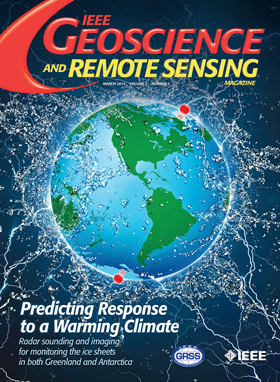耦合模型和数据驱动的遥感图像恢复和融合方法:提高物理可解释性
IF 16.2
1区 地球科学
Q1 GEOCHEMISTRY & GEOPHYSICS
引用次数: 11
摘要
在图像恢复和图像融合领域,模型驱动和数据驱动是两种具有代表性的框架。然而,这两种方法都有各自的优点和缺点。模型驱动技术考虑了成像机制,具有确定性和理论上的合理性;然而,它们不能很容易地对复杂的非线性问题进行建模。数据驱动方案对于海量数据,特别是非线性统计特征具有较强的先验知识学习能力;然而,网络的可解释性较差,并且过度依赖于训练数据。在本文中,我们系统地研究了模型驱动和数据驱动的耦合方法,这是遥感图像恢复和融合界很少考虑的问题。我们首先将耦合方法总结为以下三类:1)数据和模型驱动的级联方法,2)带有嵌入式学习的变分模型,以及3)模型约束的网络学习方法。介绍了遥感图像恢复与融合中典型的、现有的和潜在的耦合技术,并给出了应用实例。本文还从方法和应用两个方面对潜在的未来方向提出了一些新的见解。本文章由计算机程序翻译,如有差异,请以英文原文为准。
Coupling Model- and Data-Driven Methods for Remote Sensing Image Restoration and Fusion: Improving physical interpretability
In the fields of image restoration and image fusion, model- and data-driven methods are the two representative frameworks. However, both approaches have their respective advantages and disadvantages. Model-driven techniques consider the imaging mechanism, which is deterministic and theoretically reasonable; however, they cannot easily model complicated nonlinear problems. Data-driven schemes have a stronger prior-knowledge learning capability for huge data, especially for nonlinear statistical features; however, the interpretability of the networks is poor, and they are overdependent on training data. In this article, we systematically investigate the coupling of model- and data-driven methods, which has rarely been considered in the remote sensing image restoration and fusion communities. We are the first to summarize the coupling approaches into the following three categories: 1) data- and model-driven cascading methods, 2) variational models with embedded learning, and 3) model-constrained network learning methods. The typical existing and potential coupling techniques for remote sensing image restoration and fusion are introduced with application examples. This article also gives some new insights into potential future directions, in terms of both methods and applications.
求助全文
通过发布文献求助,成功后即可免费获取论文全文。
去求助
来源期刊

IEEE Geoscience and Remote Sensing Magazine
Computer Science-General Computer Science
CiteScore
20.50
自引率
2.70%
发文量
58
期刊介绍:
The IEEE Geoscience and Remote Sensing Magazine (GRSM) serves as an informative platform, keeping readers abreast of activities within the IEEE GRS Society, its technical committees, and chapters. In addition to updating readers on society-related news, GRSM plays a crucial role in educating and informing its audience through various channels. These include:Technical Papers,International Remote Sensing Activities,Contributions on Education Activities,Industrial and University Profiles,Conference News,Book Reviews,Calendar of Important Events.
 求助内容:
求助内容: 应助结果提醒方式:
应助结果提醒方式:


